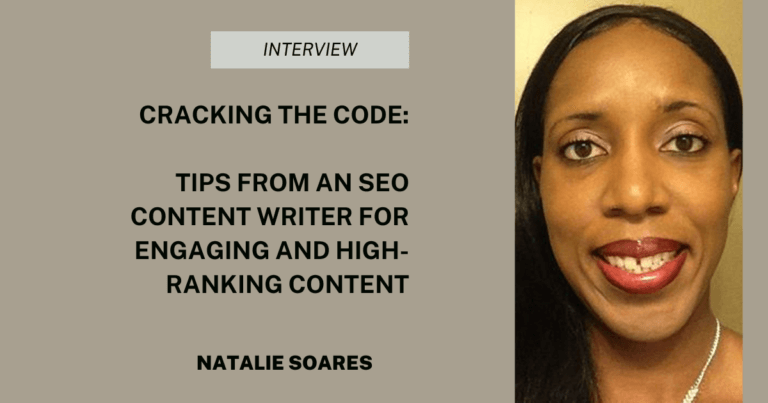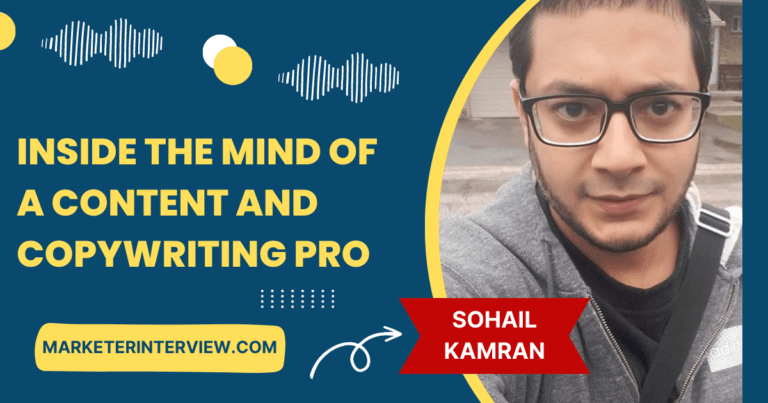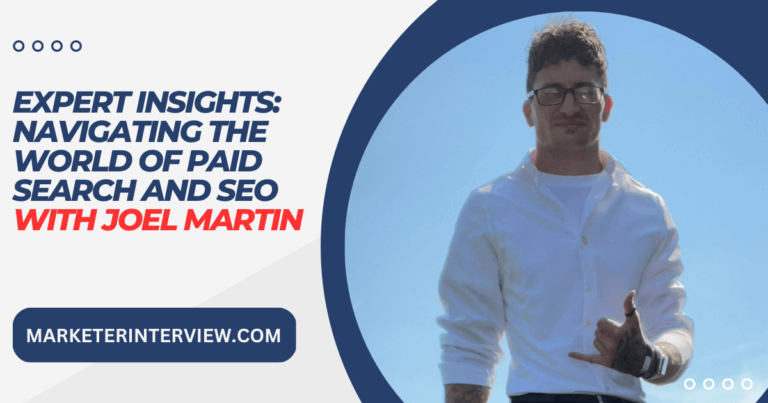Mastering the Art of Growth Marketing: Insights from Kristopher Jones
Title: Mastering the Art of Growth Marketing: Insights from Kristopher Jones
Description: Discover the secrets of growth marketing, entrepreneurship, and working with celebrities and influencers as we interview Kristopher Jones, founder of LSEO.com.
Mastering the Art of Growth Marketing: Insights from Kristopher Jones

Welcome to Marketer Interview, the popular marketing blog where we delve into the minds of exceptional marketers.
In this edition, we have the pleasure of interviewing Kristopher Jones, an influential figure in online marketing and entrepreneurship.
With a career spanning over two decades, Kristopher has founded multiple successful ventures, invested in numerous tech startups, and earned recognition for his expertise in growth marketing, AI, mergers/acquisitions, and working with celebrities and influencers.
Contents
- 1 Could you share the story of how you got into marketing and how it led you to become an entrepreneur?
- 2 What motivated you to found Pepperjam, and how did it evolve into a leading internet marketing agency and affiliate network?
- 3 Could you discuss your experiences and insights regarding growth marketing and its significance in today’s digital landscape?
- 4 How do you approach working with celebrities and influencers? What strategies have you found effective in leveraging their reach?
- 5 With your involvement in mergers and acquisitions, what advice can you give aspiring entrepreneurs about navigating this complex landscape?
- 6 Can you tell us about some of the challenges you’ve faced in your career and how you overcame them?
- 7 As an investor, what do you look for in a startup or entrepreneur before deciding to invest?
- 8 What role does AI play in marketing, and how do you see it shaping the industry’s future?
- 9 What are the essential qualities or skills a marketer needs to succeed in today’s highly competitive environment?
- 10 Please recommend some essential tools and software you rely on for your marketing efforts and business management.
In 1998, I graduated from Villanova University (in Pennsylvania). I got a random call from my brother Rick proposing that we go into business together to sell our Grandmother’s gourmet food she called “Mississippi Mud.”
At the time, I was very much into finance (online investing, Internet IPOs) and felt that the Internet would change how the world works – from how we find info to how we buy things. So I said – let’s do it!
We re-named the company “Pepperjam” since it better described the product, and my role (despite candidly having no specific knowledge of how to do so at the time) was to build the website (pepperjam.com at the time) and put together a marketing plan. As a true high achiever, I dedicated all my extra time to self-education around HTML, Internet Marketing, and later traffic monetization.
As I started to learn how to build an online business effectively, I also began to develop a lot of passion and interest in Online marketing (SEO, affiliate marketing, Pay Per Click marketing). But remember – we were a gourmet food company.
My interest in Internet marketing eventually became my full-time job. One of my early ideas to generate organic traffic to the Pepperjam website was interviewing celebrity chefs (Emeril Lagasse, Paul Prudhomme, and others) and then getting those chefs to share those interviews with their followers via newsletters (social media didn’t exist yet).
Sure enough, traffic started coming in, so I developed strategies to monetize that traffic. This led to me eventually creating a second business (also called Pepperjam) exclusively focused on Internet marketing.
Pepperjam – the digital marketing company – started in 1999. Initially, we were exclusively an affiliate business. I’d build niche websites and link those sites to affiliate programs using the large affiliate networks of the day (Commission Junction, BeFREE, Linkshare).
What started as a fun project to see how big I could scale the business turned into something much different. For instance, my first affiliate check was for $35. Fast forward to 2000 – 2003, Pepperjam became one of the larger affiliates in the United States with millions of dollars in annual revenue (BTW – this happened while I was in law school during the same period).
Once I graduated from law school, I had about 2.5M in the bank and decided I wanted to build a digital marketing and technology company that I could eventually sell. So my journey pivoting Pepperjam from an affiliate business to a full-service digital marketing agency (SEO, PPC, affiliate management, affiliate marketing) started in 2014 when I opened an office in an incubator called the Innovation Center at Wilkes Barre.
In the years that followed, Pepperjam would become one of the fastest-growing privately held companies in the United States. By 2018 we were a 100+ person company. We launched a software called Pepperjam Affiliate Network (PJN) that would forever change my life and the trajectory of the company. Within 18 months of launching PJN, we were acquired by publicly traded GSI Commerce and subsequently acquired by eBay.
As founder and CEO of Pepperjam, I was active on the public speaking circuit (SES, PubCon, etc.). Also, I started writing on SEO, growth marketing/hacking, affiliate, M&A, investing, etc. I’ve since published 4 books (including Search Engine Optimization All-in-One for Dummies last year) with over 100,000 books sold, and published nearly 600 articles in significant search publications (SEJ, SEL, SEW) and business pubs (Inc., Fast Company, Forbes, etc.).
After leaving Pepperjam in 2010 (I still had a multi-year non-compete and earnout), I started an investment fund called KBJ Capital, where I’ve made about 40 or so investments across early-stage tech, real estate, etc.
In 2014 (when the non-compete ended), I launched LSEO.com and later DoItYourselfSEO.com (soon to be diyseo.ai), among several other businesses. I’ve also raised tens of millions in venture capital for my companies, and I’ve had the opportunity to work with some of the top celebrities, professional athletes, rock stars, venture capitalists, and entrepreneurs worldwide. But candidly, I’m most excited about the next 10 years of my career!
Some companies I work with today include MerchBooth.com, LSEO.com, DoItYourselfSEO.com, AcceleratorWB.com, KrisJones.com, and KBJ Capital.
What motivated you to found Pepperjam, and how did it evolve into a leading internet marketing agency and affiliate network?
As I mentioned above, I started as a successful affiliate, and later once I founded Pepperjam, the digital marketing agency, we became one of the largest outsourced affiliate program management (OPM) companies in the United States.
So we knew what we liked about the major networks (Commission Junction and Linkshare) and what we didn’t like. One of my strongest skills as an entrepreneur is that I’m a problem solver – while others are complaining, I think through how to turn a business out of that pain.
So as the years went on with Pepperjam and we were managing more and more affiliate programs across the major networks, I decided to convene a whiteboard session with my leadership team to start building software.
In that session, we came up with three ideas – (1) to launch a shopping comparison engine that incorporated blogging (called Shogging), (2) a PPC Management software (called Searchalytics), and an affiliate network (which at the time we code-named Partner Maker, but as the DM world knows it eventually would carry the parent company name Pepperjam Network and later just Pepperjam).
By the way – for those curious about those industry pain points that led to us launching Pepperjam Network, I’m happy to share.
At the time, there was a lack of transparency in affiliate marketing. “Super Affiliates” were often unknown and, in many cases, used tactics that violated the terms and conditions of the affiliate programs. They were the #1 affiliate. So my first item of differentiation was to build an “Affiliate Transparency” meter that rated each affiliate on Pepperjam for disclosure of the tactics they used to drive traffic and sales. The idea was that transparency would improve the affiliate – affiliate program manager relationship and would lead to much better outcomes for both parties.
Secondly, the Big affiliate networks at the time were Huge, and the only real IP they had (outside of the basic stuff) was the amount and quality of affiliates they had. Most of the networks were closed, making it difficult or impossible to communicate with current and prospective affiliates.
The idea of completely opening up communication wasn’t on their radar because their competitive advantage was pretending they “owned” the affiliates. In short, they didn’t want to make it easy for the competition to compete with them.
At Pepperjam, we decided to integrate real-time chat into our network so that it was easy for affiliates and affiliate managers to communicate. It is a novel solution looking back. Still, you have to remember it was the early days of the Internet, and the idea of integrating chat into a SaaS software or affiliate network had never been done before. We were the first.
As I noted above, our innovation around greater affiliate transparency and common-sense communication tools moved the industry forward. A publicly traded company acquired us within 18 months of launching the software, and now Pepperjam is one of the largest affiliate platforms in the world.
Could you discuss your experiences and insights regarding growth marketing and its significance in today’s digital landscape?
SEO continues to evolve, especially with the opportunities to streamline content creation and keyword discovery, among other tasks, via generative AI.
While the AI industry is still nascent, we are in the midst of the greatest evolution of our time. I’m converting DoItYourselfSEO.com (and diyseo.ai) into an entirely AI-driven do-it-yourself SEO platform, so I’m betting big on the impact of AI on SEO and the evolving search engine landscape.
Aside from SEO, I continue to think about growth marketing as a performance marketer. Everything I do is based on performance data while leveraging experience, insights, and tools to make decisions about improving that data.
For instance, take paid search (Google, Bing) and paid social (Facebook, Instagram, Snap, TikTok, etc.) – the process starts by applying best practices to create the most compelling imagery, copy, video, and other creative for the primary purpose of driving higher click through rate (CTR) and conversions.
Clicks and engagement continue to matter because the system changed long ago (the early 2000s) when the highest bidder won. So I focus more on optimized creative and CTR to drive the best possible results.
Influencer marketing has also become one of the most effective ways to scale performance. By becoming an influencer yourself or positioning your business as an influencer (both help a ton), you can engage your audience in ways they want to be engaged.
Just like my buddy Gary Vaynerchuk said in his book Jab, Jab, Jab, Right Hook – content and influencer marketing requires you to deliver a shit ton of value but to build engagement strong enough that when you attempt to sell something folks don’t leave you or stop engaging with your content.
You need to be creative and ensure you add value along the way. Of course, you can also use one of the influencer networks or DM target influencers to promote your product or services. Or you can do what I’d done multiple times – partner with the influencers themselves!
How do you approach working with celebrities and influencers? What strategies have you found effective in leveraging their reach?
It’s all about structure and setting expectations. Importantly, you also want to be highly selective. Getting a celebrity to use your product or recommend your service authentically will always drive a better response than getting them to post an ad.
In my case, I’ve worked with celebrities by partnering with them on my projects (i.e., Damon Wayans, Jr) or by getting them to invest in one of my projects (i.e., Kevin Hart, Christina Milian, Jake Johnson, Lamorne Morris, etc.).
One of the most complex parts of working with celebrities and influencers is that you need to build up enough industry expertise and respect such that they would be willing to work with you.
In my case, I started working with a former NFL athlete named Larry English, who introduced me to Christina Milian (after Larry was impressed with my work and the project we worked on together). Then I introduced Larry to another one of my celebrity business partners, Obinna Ekezie (former NBA player), and the three of us presented on stage together on the topic of Professional Athletes entering the entrepreneurial and venture capital world.
I also did similar panels with Christina, Damon Jr., and several others over the years. So it’s all about credibility and effective networking – not unlike what most everyone does, but you have to street cred and then deliver when the opportunities arise.
If you plan to one day sell your business, watch this video, I made many years ago that has gotten tremendous positive feedback over the years: https://www.youtube.com/watch?v=0nJNvSnDLC8.
Here’s the gist of the video:
Successful M&A requires that you plan and start taking steps almost immediately to maximize the likelihood you’ll be successful once an offer or offers comes in later.
You should start paying yourself well ASAP and stop commingling between personal and business funds immediately.
The reason to pay yourself well is that your employment agreement with the buyer, which is often a material part of the sale of your business, is as high as reasonably possible. All acquisitions require the founder and key people to stay on board for several years.
In terms of commingling, not only is it a bad idea since you may be committing tax fraud, but it’s also not a good idea because the buyer will want a clean set of financials. Plus, commingling suggests you don’t have the proper financial controls in place at your business, which is paramount to a successful transaction.
Remember that the probability of getting someone to make a handsome offer (millions, tens of millions, or more) is low. Hence, you need to present yourself and your business in the most effective way possible.
Drive up EBITDA. EBITDA = Earnings Before Interest, Taxes, Depreciation, and Amortization. EBITDA is likely to be the metric used for valuation purposes – make sure you do everything you can to grow this number.
Generally, the higher you get it, the higher your buyout. You must focus on ramping up net revenue, not down. Don’t be overly attracted by top-line (gross) revenue, as 99% of acquirers will boil down your revenue to net / EBITDA.
Button up your books. An audit or professional review of your financials will likely be required for an M&A. Therefore, you should consider getting one or the other done (by a reputable auditing firm) sooner than later.
One of the reasons this could be important is for revenue recognition purposes. An official review or audit will also give confidence to your buyer about your revenue and educate you on what a GAAP audit/review looks like. I can’t overstate the mission-critical requirement to button up your financials and focus on what matters. For M&A purposes, focus on what the acquirer is looking for.
Here’s one of my favorite tips: Address Skeletons in the Closet!
Don’t allow surprises to come up during due diligence. If there are any potential fires, put them out now. Address conflicts – come clean with anything that a buyer may consider “unsavory” and have a short, to-the-point explanation for the issue or discrepancy. There is no reason to apologize for anything that happened in the past. Put your emotions aside, don’t apologize. Explain and move on.
Selling your business requires you to make financial projections (often called Pro Forma) professionally. Ensure you have monthly/quarterly/annual financial projections in place.
Get used to making and hitting projections, as this will be critical once you begin the M&A process, including due diligence and negotiations. *Hitting/beating #’s is excellent while in the M&A process. Missing #’s should be avoided and can halt the M&A process or seriously jeopardize the deal’s value. This is the one area that will make or break your deal or impact the final sale price.
This may be my best advice when preparing for M&A: Set up a Revenue Juggernaut!
Set up a revenue juggernaut (with somewhat unknown potential) that will allow you to get a higher multiple. The juggernaut should be software (transaction-based, subscription, and/or continuity)….
Make sure you have an aggressive monetization strategy. Examples would be a new line of business with a ton of promise. If you are a services company, you can prepare to launch a SaaS product or introduce a new and exciting product. Recall above that Pepperjam launched an Affiliate Network and 18 months later. We got acquired by eBay. Pepperjam Network was my revenue juggernaut. Bingo!
Set up a SWOT Analysis. A SWOT (Google it for help) focuses on your core strengths, weaknesses, opportunities, and threats. You should have one of these anyway, but when you begin negotiations with the prospective buyer(s), you’ll want to be able to answer SWOT-type questions with confidence and certainty. The worst thing you can do is not be prepared to defend your business and be honest about your threats and weaknesses.
Before (meaning as soon as possible), you want to increase your visibility (your company, key thought leaders, if applicable, etc.). Ideas include: Attending / Speaking at trade shows/Writing guest columns on reputable industry blogs, or contributing to significant business publications. Issue press releases about strategic hires, new products, and company achievements. Leverage social media and traditional media to generate creative ways to create buzz.
In the case of Pepperjam, we were media mavens – we created lots and lots of buzz. That’s what you need to figure out how to do.
And I have many more tips, but folks will have to reach out to me on LinkedIn, and I’ll send a presentation that includes my entire M&A checklist.
Can you tell us about some of the challenges you’ve faced in your career and how you overcame them?
Most of my biggest challenges were unexpected. My Mom passed away. A company got sued by a patent troll. COVID.
In all these instances, I believe I’ve gotten through them because I’ve dedicated all my adult life (at least 1 hour per day for the last 20 years) to personal and professional development.
This is another area that I’ve written extensively on. I’ve been to 17 LIVE Tony Robbins conferences, walked on fire 7 times, and read 1-2 books a month (primarily personal/professional development, but I also love biographies and an occasional spiritual book).
I’m a lifelong learner. Tony Robbins calls this – CANI, which stands for “Constant and Never Ending Improvement.” I’m sharing it here because I have developed a pretty kickass resolve over the years. I’m often at my best in leadership when the going gets tough.
Also, some time ago, I was told by a mentor that no matter what happens to me (or to you, for that matter), we’ll be OK. I believe that with all my heart. There will be ups and downs. That’s life. The key is how quickly you can get up from the challenges and how humble you can be during the good times.
I believe in celebration, but I also know that life is more of a series of ups and downs than a search for anything, even close to perfection.
As an investor, what do you look for in a startup or entrepreneur before deciding to invest?
I focus on investing in great founders with solid ideas in trending or established markets.
One of the key things I ask myself is – will this founder(s) be successful with or without me? If I say yes, I will often make an offer, even if it’s not on the investment I’m considering.
As I’ve made more significant investments, I’ve found it imperative that I only invest in businesses where I think I can add value. Of course, as a deeply experienced and established growth hacker, I can always offer that as value, but honestly, I want to be interested in the problem being solved. I want to connect with the idea or easily see how the initial idea can iterate over time to something super cool.
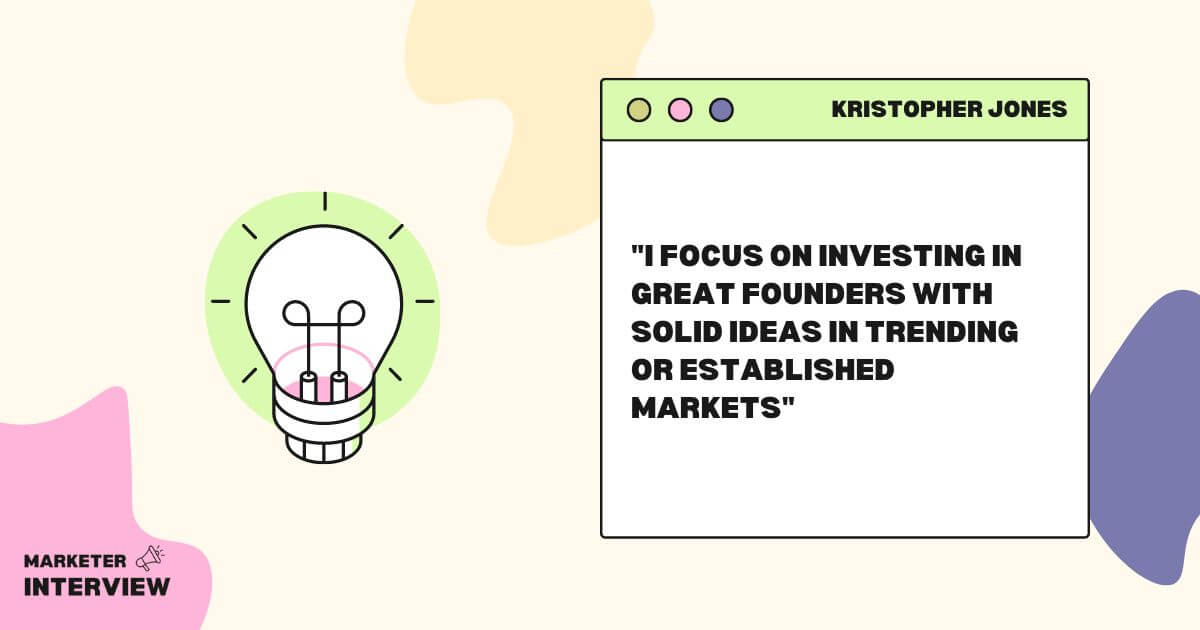
In addition, I’m not into cold outreach. I don’t think it works well. What’s worked for me as an entrepreneur (remember – my companies have raised tens of millions of dollars) is to find a way to get a referral to an investor or put myself in an environment where the investors are.
Let me give you an example. About 10 years ago or so, the leadership behind the most powerful technology and investor conference in Europe came to the US. They called the event Collision – over the years. It occurred in Las Vegas, New Orleans, and, most recently, Toronto, Canada. I’ve spoken at just about every Collision since inception.
I spoke and hung out in the speaker lounge alongside some of the top investors and entrepreneurs in the world. I also got to share the stage numerous times with celebrities and influencers. Through that experience, I was able to build a ton of relationships and establish myself within that community.
Getting someone to invest in your company requires a strategy, and most certainly, that strategy takes a lot of work. It also doesn’t hurt that I sold my first business to eBay, but many fellow investors and entrepreneurs who speak at these shows are first-timers or found a way.
What role does AI play in marketing, and how do you see it shaping the industry’s future?
Generative AI is the most disruptive thing to happen to the market in our lifetime. It had the force to redefine the entire industry. Things that took time or required people in the past can now be done more efficiently.
AI also, by definition, can continuously improve input by collecting data and using that data to make more thoughtful and informed decisions.
I’d instead not dive into some of the negative things that come with AI, but let’s just say specific industries won’t exist in the coming years.
You can benefit from AI but must start using it and getting comfortable with it now. Don’t wait on the sidelines.
I spend several hours daily leveraging AI to streamline workflow and do things smarter. I’m also pivoting my DIY SEO software to be driven entirely by AI – stay tuned to the doityourselfseo.com and diyseo.ai websites for when we’ll launch.
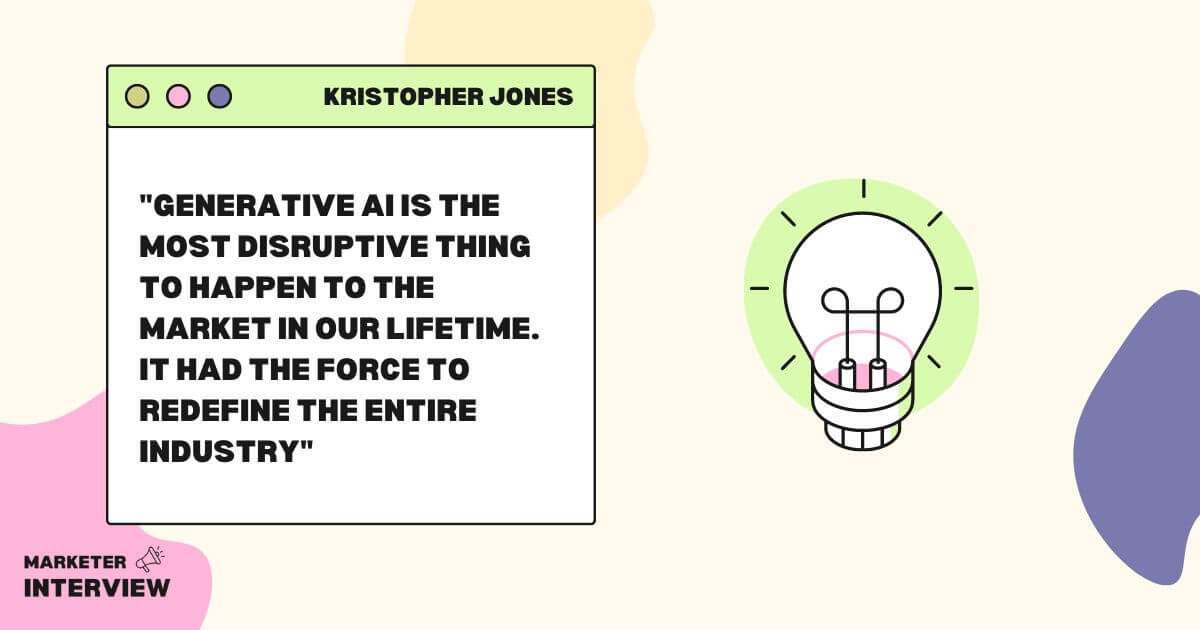
What are the essential qualities or skills a marketer needs to succeed in today’s highly competitive environment?
I think it’s all about developing core expertise in the daily tools you use to do your job. And once you develop expertise in the tools you use, you need to develop a strategic mindset.
Developing a strategic mindset comes from thinking about why we do what we do and how things work.
You should always be asking yourself: What is the outcome here? Is it the best outcome, or should we think through alternatives? Why are we doing something this way? Can you think of more effective ways to do something? Why are we doing this?
Answering these questions will help you develop a strategic mindset. Don’t just check boxes – box checkers make little money and move up the leadership ladder. Thinkers and Problem solvers do. Hold yourself to the highest standards.
Think about problems like this (especially when you aren’t the business owner) – what would the owner do here? An owner mindset helps you think about the end goal, critical to becoming a highly valuable and successful marketer.
Please recommend some essential tools and software you rely on for your marketing efforts and business management.
Here’s my list of tools:
- Open AI – ChatGPT
- Semrush
- AIPRM
- CrunchBase
- Google Docs, Slides, Sheets, Drive
